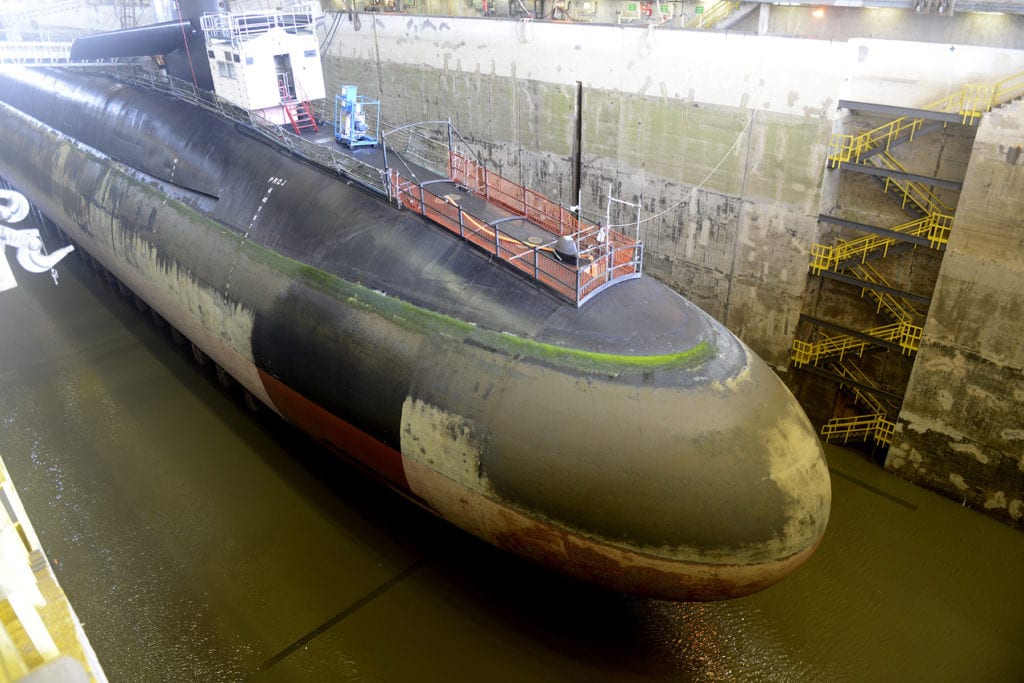
ARLINGTON, Va. — The commander of the nation’s strategic deterrent forces again defended the low-yield nuclear warhead that the Navy has deployed at sea on Trident submarine-launched ballistic missiles on board ballistic-missile submarines (SSBNs). This time he cited analysis to support the deployment.
Adm. Charles A. Richard, commander, U.S. Strategic Command (STRATCOM), testified April 22 before the Strategic Forces subcommittee of the House Armed Services Committee (HASC) on the status of the nation’s strategic forces.
“Within the last year, STRATCOM started formally measuring risk of strategic deterrence failure,” Richard said. “This is a formal risk assessment designed to make sure that we are analytically rigorous in all the things that we do, acknowledging that this is fundamentally trying to measure a subjective process, the decision making of another country. Our assessment is that the deployment of a low-yield [warhead] improved the risk of strategic deterrence, i.e., it lowered it because of the deterrent effect it achieved.”
The submarine-launched low-yield warhead became a requirement noted in the 2018 Nuclear Posture Review. The result was the W76-2 warhead, which was deployed in 2019 on the tips of some Trident submarine-launched ballistic missiles carried by Ohio-class SSBNs.
With the change in presidential administrations and the leadership of the Congress, critics, including HASC Chairman Adam Smith, D-Washington, have been bolder in expressing long-held opposition to the W76-2 low yield warhead as de-stabilizing to the nuclear balance.
In hearings this week before subcommittees of the Senate and House armed forces committees and in a Pentagon news conference, Richard noted that this era was the first in which the United States was faced with deterring two peer competitors — Russia and China. He termed China as the greatest strategic threat to the United States, but that Russia was the greatest nuclear threat to the United States.
He said the United States requires the total capacity of the nuclear triad — intercontinental ballistic missiles, bombers and submarine-launched ballistic missiles — to maintain strategic deterrence.
- Insitu Going Strong at 30, Focusing on Maritime Operations - April 8, 2024
- Navy Awards Boeing Additional Funds for MQ-25 Drones for Testing - April 3, 2024
- Benign 4th Fleet AOR Useful for Unmanned Vehicle Operationalization, Admiral Says - March 27, 2024






